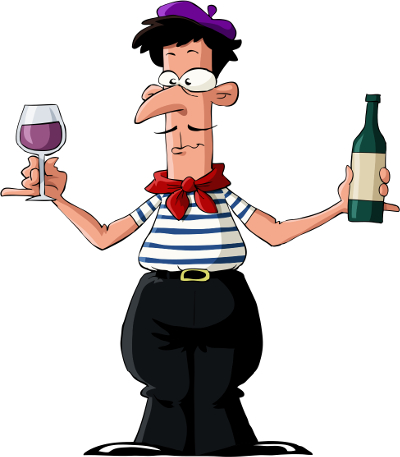Reasons for Why NOT to Fill up a Glass of Wine all the Way
 When a waiter opens a bottle of wine properly, the waiter shows the patron the label and offers the cork. This allows the patron a chance to determine is if the wine spoiled from a mold, which grows in cork. If this mold is present, it has a distinct odor of mustiness. It ruins the flavor of fine wine.
When a waiter opens a bottle of wine properly, the waiter shows the patron the label and offers the cork. This allows the patron a chance to determine is if the wine spoiled from a mold, which grows in cork. If this mold is present, it has a distinct odor of mustiness. It ruins the flavor of fine wine.
Next, the waiter offers a small sampling of the wine. The patron swirls the wine in the glass, inhales the bouquet, and takes a sip, to verify any suspicions about moldy flavor and check for the smell and taste of vinegar. Wine sometimes goes bad. In modern times, these problems are a rarity, but they exist in older vintages stored in wine cellars.
Once wine passes these simple tests, poured wine fills the glass to a maximum of half-full. Red wine gets a chance to “breath” (exposure to air) in the glass. The extra space allows more enjoyment of the bouquet, and prevents spillage. Wine is for sipping, not guzzling. Tilting the wine in the glass and holding it to the light reveals its color. Swirling the wine in the glass releases the bouquet.
For white wine, many prefer the glass to be only one-third full, because it tastes better when chilled. Too much white wine in a glass may lose its chill before drinking. Flute glasses, filled to three-quarters are best for serving champagne and sparkling wine. A flute glass slows escape of the bubbles. Wine aficionados hold their wine glasses by the stem, not the bowl, to prevent any body heat transfer from the hand to the wine.
These are all the reasons why not to fill up a glass of wine all the way.
Post comment
Recent Posts
- Enhance the Sipping Experience With Quality Aerators and Pourers
- Need a Charming Old-World Upgrade? Wine Jails Are the Answer
- Leather Wine Bags Bring a Touch of Luxury to Your Favorite Hobby
- The Best Wine Bags and Luggage for Wine Salespeople
- Wonderful Wine Furniture for the Vineyard Inspired Home
- Display Your Favorite Bottled Treasures With Tabletop Wine Racks
 October 13, 2014 | Posted in
October 13, 2014 | Posted in 



